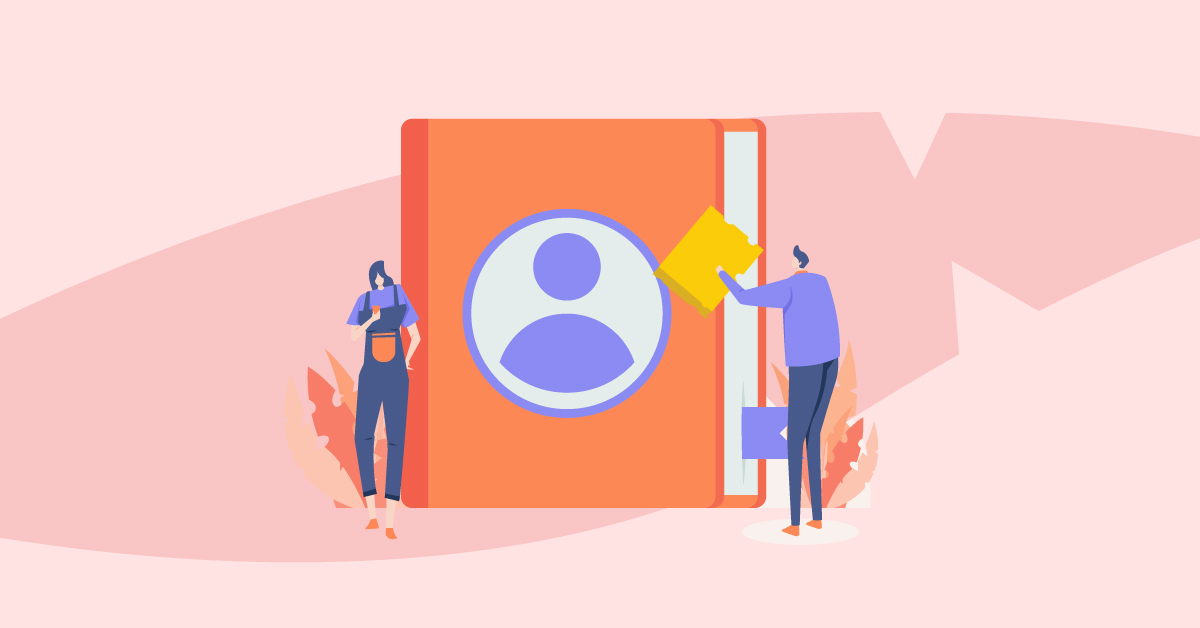Just like a brick-and-mortar storefront, keeping your email list squeaky clean is critical to maintaining a solid reputation.
How so?
If your storefront is dirty, people aren’t going to send their friends to visit. Likewise, email service providers (ESPs) will not deliver your emails if your email list is dirty.
What is Email List Cleaning?
Email list cleaning is the process of “scrubbing” your subscriber lists and getting rid of bad emails. Bad emails can include duplicates, email addresses with typos, people who have never opened an email, bots, etc.
A clean email list will help improve your sender reputation, which can improve your email deliverability rates and decrease your bounce rate.
Benefits of Email Cleaning
A clean email list will improve your email marketing metrics across the board. Here are a few examples of how cleaning an email list is beneficial for online stores:
- Reduced costs. Most ESPs (like Mailchimp or Klaviyo) charge you based on how many active subscribers you have or how many emails you send. By removing unengaged and bad email lists, you are effectively reducing that number.
- Improved open rates. While open rates may be a thing of the past, they can still be helpful in some situations. By only sending to engaged subscribers, you will see an immediate boost to your open rates.
- Improved click rates. We like to measure click rates instead of open rates because they are a much more dependable and meaningful email marketing KPI.
- Fewer spam complaints. Some subscribers mark emails as spam even if they legitimately signed up. This usually happens when they don’t remember signing up or can’t find the unsubscribe link. If you are proactive, you can remove these subscribers before they file a spam complaint.
- Increased conversions. Sending to fewer people can actually result in more conversions. That’s because you’re less likely to be flagged as spam, which will increase your deliverability (and conversions)!
What Happens if You Don’t Clean Your Email List?
Don’t ignore your email list hygiene. For example, if an ESP notices that you are sending a very high number of emails with very low engagement, you could be flagged, and your emails could go straight to the spam folder.
Once your emails are flagged as spam (sometimes called the blacklist), it is a long and arduous process to get back into someone’s inbox.
It’s best to be proactive and minimize spam complaints by maintaining a clean email list.
Tips for Identifying Bad Emails
The first step of email scrubbing is to identify bad emails so that only valid email addresses remain. If you’re not using an email validation service, you can do some of these things yourself.
- Look for hard bounces. Many email service providers will differentiate between hard and soft bounces. A hard email bounce is when the email address doesn’t exist, or the recipient’s email server blocks the email entirely.
- Remove duplicate emails. Export your entire email database as a CSV and use the remove duplicates function in Excel of Google Sheets for a quick and easy scrub!
- Remove typos. Search your email list of obvious typos in the domain name (for example, people might accidentally type “gnail.com” when they meant to type “gmail.com” or “yaboo” instead of “yahoo.”
- Use an email checker. There are some free email verification services that you can find on Google to identify fake emails. Usually, you’ll have to pay if you want to upload and verify a bulk email list.

Tips for Identifying Unengaged Subscribers
Identifying unengaged subscribers is usually pretty straightforward — you look at open rates or click rates and remove people who haven’t opened or clicked an email in a long time.
The difficult part is defining what “unengaged” means to your organization. Some organizations are very strict and remove subscribers after just a short period of time. Others are more lenient and wait up to a year before removing an unengaged subscriber.
You can use marketing automation to identify these subscribers automatically. You just need to set filters in your ESP. A few example filters you can try out:
- Subscriber has not opened an email in >45 days.
- Subscriber has not clicked an email in >90 days.
- Subscriber has not purchased a product in >365 days.
Of course, your exact definition of “unengaged” depends on your goals. In any case, we always recommend trying to winback customers before saying “goodbye” forever.
Tips for Re-Engaging Subscribers
Before you clean up unengaged subscribers, you may want to try a re-engagement or winback campaign. The goal is to identify people who are still interested and remove people who aren’t.
- Be straightforward. Tell your subscribers that you will remove them unless they tell you otherwise (in the form of a second opt-in).
- Ask them a question. Asking a question can nudge people to engage with your emails. Your question can be as straightforward as “Do you still want to receive our emails?”
- Present a ridiculous offer. In your winback email, try giving subscribers a considerable discount. If someone doesn’t respond to a 50% discount offer, then they probably aren’t the right audience for your messaging or products.
- Give them a choice. Instead of removing someone altogether, offer to send them fewer emails. For example, let them choose to receive emails once a week, once a month or once a quarter.
The Best Email List Cleaning Services
If you’re willing to spend a little bit of money, you can use an email list cleaning service to identify invalid email addresses. Many of these list cleaning tools offer real-time email verification through integrations with ESPs. Here are a few of the most popular email list verification services:
If your email metrics are slipping and you don’t know what to do, it might be time for a thorough email scrubbing. Don’t neglect your email list hygiene, or else you might be relegated to the spam folder — never to be seen again.
Quantum helps clients maintain clean email lists and boosts email revenue with data-driven lifecycle marketing strategies.
